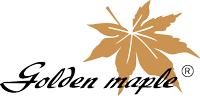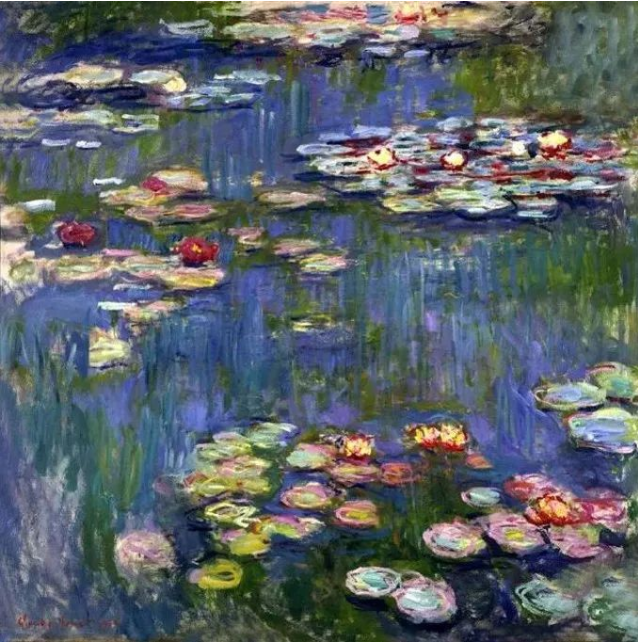An oil painting; A painting in oils is a painting done on canvas, linen, cardboard or wood with quick-drying vegetable oils (linseed oil, poppy oil, walnut oil, etc.) mixed with pigments. The thinner used in painting is volatile turpentine and dry linseed oil. The paint attached to the picture has a strong hardness, when the picture dry, can maintain gloss for a long time. By virtue of the covering power and transparency of pigments, the objects depicted are fully represented, with rich colors and strong three-dimensional texture. Oil painting is one of the main western painting. The following is to introduce the painting techniques of oil painting.
Thinker wall painting mural collates 15 techniques that painting oil painting must know:
1. Frustrated is the method of coloring with the root of the oil brush. After pressing the pen, make a slight setback and then lift it, such as the inverse front of calligraphy, vigorous and strong. The difference between the nib and the root of the pen dipping color, according to the direction of the weight of the pen can produce a variety of changes and interest, basically dry paint without dilution.
2. Patting The technique of dipping a wide paintbrush or fan pen into the color and gently patting it on the screen is called patting. The beat can produce a certain undulating texture, which is neither very obvious nor too simple, and can also deal with the original strong stroke or color, so as to weaken it.

 3. Kneading refers to the method of directly combining two or several different colors on the picture with a pen. After the color is combined, the natural mixing changes will be produced to obtain subtle and bright colors and contrast between light and shade, and it can play a transitional and cohesive role.
3. Kneading refers to the method of directly combining two or several different colors on the picture with a pen. After the color is combined, the natural mixing changes will be produced to obtain subtle and bright colors and contrast between light and shade, and it can play a transitional and cohesive role.
4. Line lines refer to lines drawn with a pen. In oil paintings, lines are usually drawn with a soft, pointed lead, but in different styles, round heads, shapes and old flat pens can also be drawn with thick lines like the strong center of a book. Both eastern and western paintings started with lines. In early oil paintings, they usually started with precise and rigorous lines. The line arrangement method in Tempera technique is the main means of forming light and shade. Western oil painting later evolved into light and shade and body head, but in spite of this, the Central Line of oil painting has never disappeared. Slim and bold. Neat or optional not stick to and all sorts of lines that repeatedly crisscrossing fold pressure apply, make oil painting language is richer, the processing of edge line of different body is very important more. The use of thread in Oriental painting also influenced the style of many western modern masters, such as Matisse, Van Gogh, Picasso, Miro and Klee are masters of using thread.
5. Sweep is commonly used to join two adjacent color blocks, so that it is not too stiff, while the color is not dry with a clean fan brush can achieve this purpose. Another color can also be swept up with a pen on the bottom color to produce up and down staggered, loose and not greasy color effect.
6. Stamping refers to dipping the color with a hard bristle brush and stamping the paint vertically on the picture with the head of the pen. The stomping method is not very common and is usually used only when the area requires a special texture.
7. Lala refers to the painting sometimes needs to draw strong lines and sharp edges of objects, such as the side of the sword or glass, then the painting knife can be used to adjust the color and then use the edge of the blade to pull the color on the picture with a good line or color surface. The body drawn by the painting knife is solid and certain, which is difficult to achieve by brushes or other methods.
8. Erasing is to lay the brush horizontally and rub it on the picture with the abdomen of the brush. Usually, less color is used in a large area when erasing, which can form a less obvious brush stroke and is also a common method for laying the underlying color. On the dry background or undulating texture, brush strokes can be used to draw the effect of traditional Chinese painting flying white, so that the underlying texture is more obvious.
9. Suppression is to gently press down on the wet color layer with the bottom of the knife and then lift it. The color surface will produce a special texture. In some places where special texture needs to be depicted, suppression techniques can achieve the desired effect.
10. The method is to use a knife instead of a paintbrush and apply color to the canvas in the same way that a mason uses a trowel to ring the plaster, leaving a direct knife mark. The method of laying bricks can have different thickness levels, the size and shape of the knife and the direction of the knife will also produce rich contrast. Using a drawing knife to take different colors without too much blending, allowing them to mix naturally on the picture can produce subtle color relationships. Undulating too large color layer can also use the method of laying bricks or stones to lay bricks or stones flat. If the method of laying bricks or stones is used properly, there will be a strong sense of shaping.
11. Drawing refers to using the blade of a painting knife to carve Yin lines and shapes on the wet color, sometimes exposing the underlying color. Different drawing knives can produce different changes in depth and thickness and the color surface produced by the brush stroke and drawing knife techniques form the texture changes of point, line and surface.
12. All the strokes start from the point, and all the strokes start from the point. As early as in the classical tempela technique, dot painting is an important technique of expression level. Vermeer also used dot strokes to express the flicker of light and the texture of objects. The point method of Impressionism has become one of its basic characteristics, but monet, Renoir and Pissarro point method has different changes and personality. Neo-impressionists went to extremes, mechanically using dots as their sole brushwork. Modern realistic oil paintings also use the density of points to produce light and shade levels, which can create a definite and not rigid transition. The method of point can produce rich contrast with line and decent combination in comprehensive painting method. The oil brush with different shape and texture can produce different point strokes, which can play a unique role in the performance of the texture of some objects.

13. Scraping is the basic use of oil painting knife. The scraping method is generally to use the blade to scrape off the part that is not ideal on the picture. At the end of a day of homework often need to finish the painting of part of the color with a knife to dry in time, and then the next day to paint. After color is dry, also can use draw knife or razor to scrape rough place of discretion level off a few. It can also be scraped with a knife on the wet color layer to reveal the background color so as to show various textures.
14. Smear Painting if point painting and drawing method is the means of forming oil painting points and lines, then painting is the composition of oil painting style, that is, the main method. The method of besmear has flat besmear, thick besmear and thin besmear, also have the dot color method of impressionism called scattered besmear. Flat painting is the main method of painting large area of color block, and even flat painting is also a common technique of decorative oil painting. Thick painting is the main feature of oil painting which is different from other kinds of painting. It can make the paint produce a certain thickness and leave obvious strokes to form texture. Scraping or pressing extremely thick paint onto the canvas with a drawing knife is called stacking. Thin xu is the oil after the color thinly spread on the picture, can produce transparent or translucent effect. Scatter besmear uses pen to appear flexible changeful, spirit charm is vivid. Combined with rubbing sweep of the coating method is also called halo coating.
15. Swing The brush to put the paint directly on the canvas without making more changes is called swing, swing is also one of the basic strokes of oil painting. The method of placing is often used at the beginning and end of oil painting to find the relationship between color and form with a certain color and accurate brushwork. It often takes only a few strokes to change the picture in the key point. Of course, it can be effective before writing.
In the process of painting to try and explore, you will feel different techniques bring you different visual effects, each technique has its own unique, bold to show it.
Post time: Oct-15-2021






